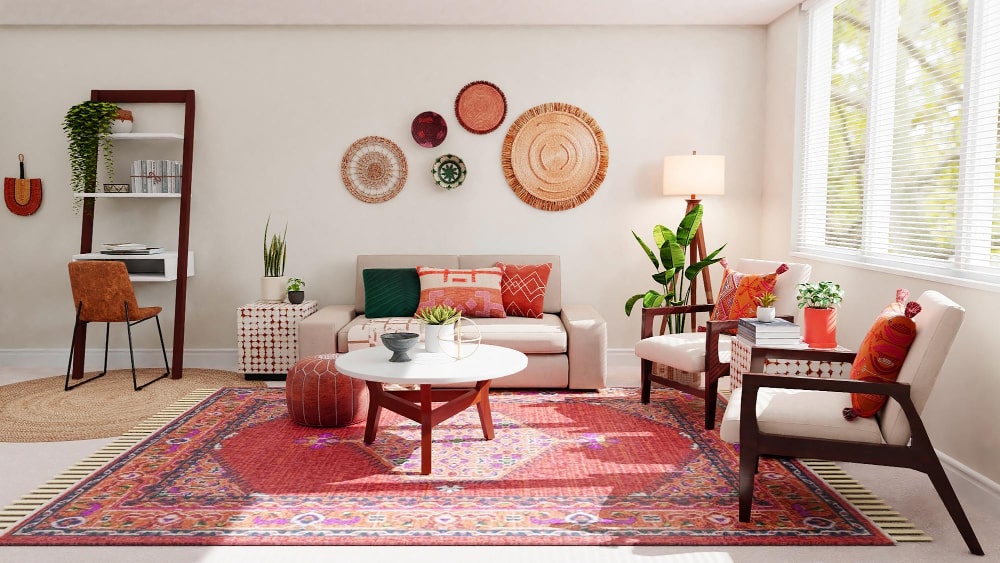Trust professionals in luxury interior design for a stylish home.
Trust professionals in luxury interior design for a stylish home.
Blog Article
Change Your Home With Essential Principles of Interior Decoration and Visual Appeals
By understanding the influence of shade theory and the significance of appearance and patterns, one can develop spaces that are not only aesthetically attractive but also deeply individual. Accomplishing this balance includes more than plain design; it encompasses a critical arrangement and an eager understanding of exactly how each element connects within an area.
Understanding Shade Concept
Recognizing the principles of color theory permits designers to produce areas that resonate psychologically with passengers while meeting functional needs. Each classification plays a vital function in developing consistency within a space.
The mental influence of colors is extensive; warm colors such as reds and oranges stimulate energy and warmth, while great tones like blues and environment-friendlies advertise peace and serenity. Additionally, using complementary colors enhances aesthetic passion, producing striking contrasts that can raise a space's allure.
Neutral shades, on the various other hand, act as a versatile backdrop, enabling various other design elements to shine. It is vital to think about aspects such as lights and the room's function when choosing a color combination, as these can change the understanding of colors throughout the day.
Inevitably, a well-considered color design can change an area, promoting a sense of comfort and design that lines up with the citizens' choices. Proficiency of shade theory is, consequently, a vital ability for any kind of indoor designer aiming to develop harmonious and inviting environments.
Attaining Equilibrium in Style
How can designers attain a feeling of stability in their spaces? Attaining equilibrium in design is fundamental to developing unified interiors. Designers can make use of three primary kinds of balance: balanced, unbalanced, and radial. In proportion equilibrium entails preparing components uniformly around a central factor, promoting a sense of order and peace. This kind frequently includes sets of furnishings or art work, enhancing visual stability.
Unbalanced balance, on the various other hand, counts on varying components that still accomplish a cohesive appearance. This method enables more dynamic and casual arrangements, giving rate of interest while keeping balance. By thoroughly picking varying sizes, shades, and textures, developers can develop a visually compelling room that feels well balanced yet energised.
Radial balance emphasizes a main prime focus with components radiating external. This design is typically seen in round designs, where furniture and design develop a natural surround that draws the eye internal.
Inevitably, achieving equilibrium requires thoughtful consideration of range, percentage, and the connections between components. interior design firms. By skillfully using these equilibrium principles, developers can change spaces into atmospheres that really feel both aesthetically pleasing and functionally harmonious, improving the total experience for owners
Importance of Spatial Awareness

A keen feeling of spatial recognition permits developers to identify prime focus within a space, assisting the visitor's attention to key functions while preserving an overall sense of unity. It likewise helps in the calculated positioning of lights, which can dramatically influence the understanding of room and state of mind. Furthermore, understanding spatial relationships enables the developer to accommodate the specific needs of inhabitants, guaranteeing that each area offers its desired objective without jeopardizing appearances.
Inevitably, spatial awareness is crucial for taking full advantage of the possibility of any type of interior space. By meticulously taking into consideration the interplay between dimensions, layout, and feature, designers can create settings that not only fulfill practical needs yet likewise stimulate a feeling of comfort and elegance, improving the total living experience.
Incorporating Structure and Patterns
Welcoming a varied variety of structures and patterns can dramatically boost the visual and responsive appeal of an indoor area. The strategic use various products-- such as wood, steel, fabric, and stone-- develops deepness and rate of interest, making a room feel extra inviting and vibrant. For instance, integrating smooth surface areas with rough appearances can establish an equilibrium that draws the eye and engages the detects.
When integrating patterns, consider both scale and rep. Huge patterns can serve as prime focus, while smaller sized, subtle styles can complement various other components without overwhelming the area. Layering patterns, such as pairing flower paddings with candy striped throws, adds complexity and a feeling of consistency if performed attentively.
It is likewise vital to preserve a natural color palette, making certain that textures and patterns interact instead of compete for focus. By picking a few essential structures and patterns, you can create an unified aesthetic that mirrors your individual style while enhancing the total setting of the area. Eventually, the cautious incorporation of these elements can transform a mundane room right into an advanced environment abundant with personality and warmth.
Customizing Your Area
Creating a room that shows your character is vital to attaining an absolutely welcoming atmosphere. Customization in indoor style permits you to instill your distinct design and passions into your home, changing it from a simple shelter right into a haven that talks with that you are. Begin by choosing recommended you read a shade combination that reverberates with your emotions-- bold hues can invigorate, while soft tones use tranquility.
Include artwork and style that show your More hints interests, whether it be travel, nature, or abstract concepts. Showing individual collections, such as books, pictures, or mementos, can stimulate valued memories and produce prime focus within a space. In addition, think about tailoring functional items, like upholstered furnishings, to align with your visual choices.

Verdict
Finally, the improvement of a home through the necessary principles of indoor design and visual appeal demands an extensive understanding of shade concept, equilibrium, spatial recognition, structure, and customization. Each element contributes substantially to developing a harmonious and functional living environment - Architecture Firm. By attentively incorporating these principles, individuals can enhance the visual charm and emotional vibration of their rooms, inevitably cultivating a home that reflects unique identities while offering comfort and practicality
Report this page